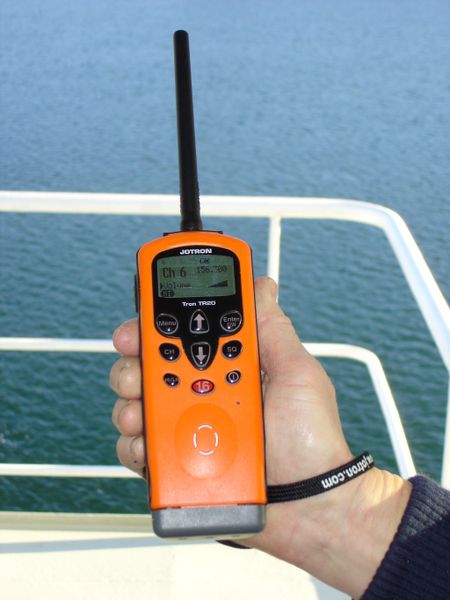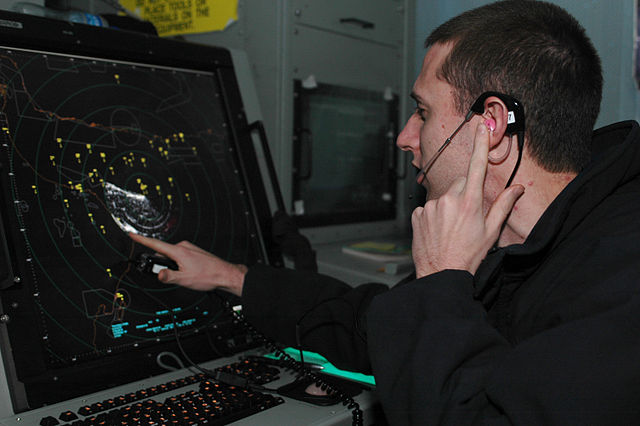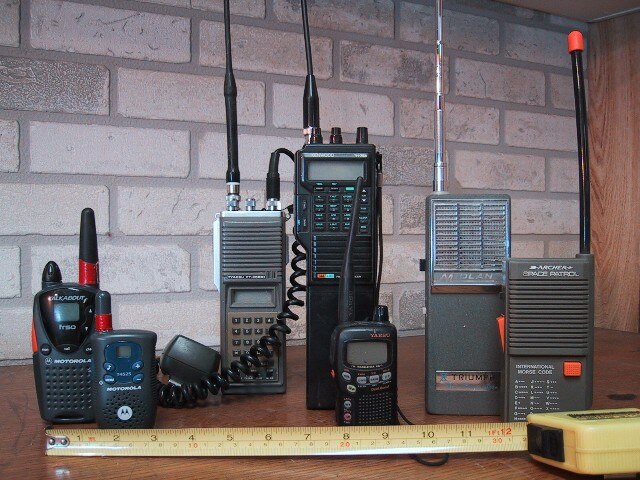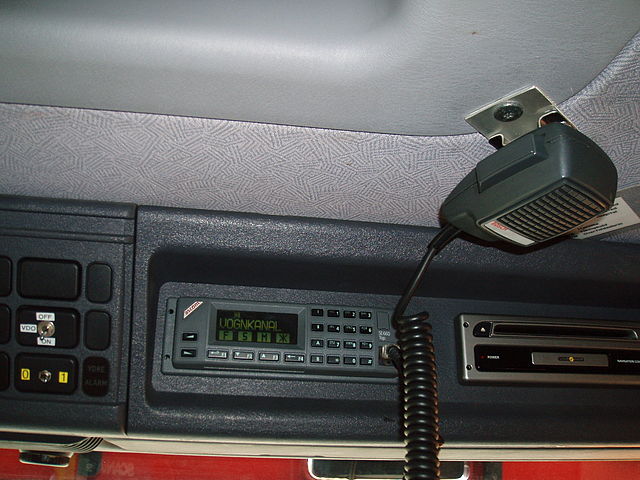Marine VHF radio is a worldwide system of two way radio transceivers on ships and watercraft used for bidirectional voice communication from ship-to-ship, ship-to-shore, and in certain circumstances ship-to-aircraft. It uses FM channels in the very high frequency (VHF) radio band in the frequency range between 156 and 174 MHz, designated by the International Telecommunication Union as the VHF maritime mobile band. In some countries additional channels are used, such as the L and F channels for leisure and fishing vessels in the Nordic countries. Transmitter power is limited to 25 watts, giving them a range of about 100 kilometres.
A standard handheld marine VHF, mandatory on larger seagoing vessels under the GMDSS rules
A VHF set and a VHF channel 70 DSC set, the DSC on top
A vintage (76-89) marine VHF radiotelephone
A two-way radio is a radio transceiver, which is used for bidirectional person-to-person voice communication with other users with similar radios, in contrast to a broadcast receiver, which only receives transmissions.
Naval air traffic controller communicates with aircraft over a two-way radio headset
A variety of portable handheld two-way radios for private use
VHF marine radio on a ship
Two-way radio in a fire truck used by firefighters to communicate with their dispatcher






